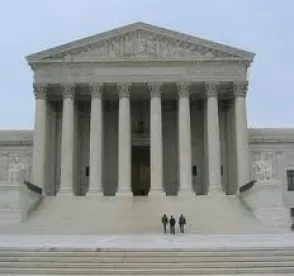In a case for overtime compensation for time spent by workers putting on and taking off protective gear, the U.S. Supreme Court in a 6-2 ruling has upheld the use of representative sampling as evidence for common claims among the class action plaintiffs, workers killing hogs and trimming pork products at processing plants in Iowa. Tyson Foods v. Bouaphakeo, No. 14-1146 (Mar. 22, 2016).
Contending they were due overtime pay, the workers sought certification of their Fair Labor Standards Act claims as a “collective action” and certification of their state claims as a class action under Federal Rule of Civil Procedure 23. (The state claims were brought under Iowa’s wage payment statute, which the parties assumed required the same proof as for the FLSA claim.)
Before certifying a class under Rule 23, a district court must find that “questions of law or fact common to class members predominate over any questions affecting only individual members.” The parties agreed that the most significant question common to the class was whether donning and doffing protective gear is compensable under the FLSA. The company claimed that individual inquiries into the time each worker spent donning and doffing predominated over this common question. The workers argued that individual inquiries were unnecessary, because it could be assumed for purposes of establishing liability that each employee donned and doffed for the same average time observed in a study done by their industrial-relations expert.
The plaintiffs relied on the study done by an industrial-relations expert to show the amount of time the workers spent donning and doffing because the employer did not keep records of this time. The study drew on a representative sample of 744 observations of workers. The federal district court agreed to allow the study as evidence and certified the class and a jury awarded about $2.9 million in unpaid wages to the class of 3,344 members. The appellate court affirmed the district court decision and the U.S. Supreme Court, in turn, affirmed the lower court decisions.
Justice Anthony Kennedy, writing for the majority, said “a representative or statistical sample, like all evidence, is a means to establish or defend against liability.” If a sample is good statistical analysis, it is admissible to establish a common class. The Court has allowed this kind of evidence into a trial of a class action or other type of case, depending “on the degree to which the evidence is reliable in proving or disproving the elements” of the legal claim at stake, since its decision in Anderson v. Mt. Clemens Pottery Co., 328 U.S. 680 (1946).
On the facts of this case, the majority found the use of the “representative evidence,” which was not explicit as to each individual worker, is proper to show the group could have had the same legal claim, without having to prove it individually. The decision is notable in its limited holding. The Court’s decision applies only to cases in which the courts have determined that the representative evidence offered by the plaintiffs is a statistically valid sample that can be extrapolated to show the amount of time for the class as a whole. This determination was not contested on appeal in Bouaphakeo. The decision’s impact, therefore, is likely to be limited.
Chief Justice John Roberts filed a concurring opinion in which Justice Samuel Alito joined, in part, while Justice Clarence Thomas filed a dissenting opinion in which Justice Alito joined also. Justice Roberts’ concurrence highlights the narrowness of the decision, noting that this decision does nothing to solve the problem of what to do with class members for whom the average amount of off-the-clock time fails to establish liability.




 />i
/>i

